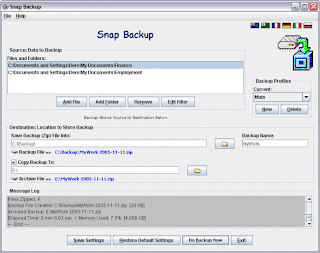VIA ARTiGO Pico-ITX Kit with Ubuntu
The VIA ARTiGO, a Pico-ITX build kit from VIA (for those who don't know Pico-ITX , please check this WikiPedia link) , makes the possibilities of low power, small form-factor computing. The Artigo comes with just about everything you need to build an energy efficient computer based on the VIA C7 processor except a 2.5-inch hard drive (IDE for this version) and a DDR2 533MHz SO-DIMM memory stick (up to 1GB, with a recommended density of 2Rx16).



shown here is also the back of the unit showing the rather simple and straightforward nature of the Artigo. Just a video, LAN, and screen connectivity appear here. I wish they had put 2 USB ports on the rear so the front of the Artigo wouldn’t be so cluttered with USB cables and that would allow for the keyboard and mouse to be connected via the rear for a nice clean desktop setup.
VIA does provide a circular cutout right near the power jack to install optional included cables that extend the functionality and versatility of the unit, included optional connecting hardware are:
* DVI Video Out Cable
* Serial port cable
* PS/2 KB/Mouse cable
* External PSU input cable (if you elect not to use the internal DC-DC PSU PCB)
* 2.5” IDE Ribbon Cable (I don’t much see the point in this since they already provide a PCB for linking the HDD to the mainboard inside the unit)
Inside the Artigo, there is a SATA port for adding an external SATA HDD but VIA doesn’t give you a way to cleanly set this up. You are left to find your own solution for adding the HDD and setting it up with the Artigo. I wish VIA set up an e-SATA port to simply plug into the mainboard SATA connector like they did with the USB and audio, that would certainly amplify the geek appeal of the box even more and provide an easy and clean way to add an external disk drive.
Though VIA’s website mentions that Windows XP is supported, I preferred to install Ubuntu Linux on the Artigo kit. In this article, I wanted to gauge how the Artigo performed as an energy efficient desktop computer for internet surfing, email, webcam-ing, and music. I must say on all tasks, I was pleasantly surprised the by the capabilities of such a lightweight processor as VIA’s C7. For the most part, general application performance was acceptable considering the hardware things were running on–the app launch speeds were certainly reasonable and did not make it unpleasant to use. As I write this article for publication, I have several windows open, I’m pulling in my favorite internet radio stream, and the machine seems to still perform with good response. At idle, the Linux OS only chews up about 170MB of the 1GB of ram, and generally uses 2% processor time. The following screenshot of the htop tool shows this below, except there was a 5% spike when the screen capture fired so that’s why we see 7%.





shown here is also the back of the unit showing the rather simple and straightforward nature of the Artigo. Just a video, LAN, and screen connectivity appear here. I wish they had put 2 USB ports on the rear so the front of the Artigo wouldn’t be so cluttered with USB cables and that would allow for the keyboard and mouse to be connected via the rear for a nice clean desktop setup.
VIA does provide a circular cutout right near the power jack to install optional included cables that extend the functionality and versatility of the unit, included optional connecting hardware are:
* DVI Video Out Cable
* Serial port cable
* PS/2 KB/Mouse cable
* External PSU input cable (if you elect not to use the internal DC-DC PSU PCB)
* 2.5” IDE Ribbon Cable (I don’t much see the point in this since they already provide a PCB for linking the HDD to the mainboard inside the unit)
Inside the Artigo, there is a SATA port for adding an external SATA HDD but VIA doesn’t give you a way to cleanly set this up. You are left to find your own solution for adding the HDD and setting it up with the Artigo. I wish VIA set up an e-SATA port to simply plug into the mainboard SATA connector like they did with the USB and audio, that would certainly amplify the geek appeal of the box even more and provide an easy and clean way to add an external disk drive.
Though VIA’s website mentions that Windows XP is supported, I preferred to install Ubuntu Linux on the Artigo kit. In this article, I wanted to gauge how the Artigo performed as an energy efficient desktop computer for internet surfing, email, webcam-ing, and music. I must say on all tasks, I was pleasantly surprised the by the capabilities of such a lightweight processor as VIA’s C7. For the most part, general application performance was acceptable considering the hardware things were running on–the app launch speeds were certainly reasonable and did not make it unpleasant to use. As I write this article for publication, I have several windows open, I’m pulling in my favorite internet radio stream, and the machine seems to still perform with good response. At idle, the Linux OS only chews up about 170MB of the 1GB of ram, and generally uses 2% processor time. The following screenshot of the htop tool shows this below, except there was a 5% spike when the screen capture fired so that’s why we see 7%.



Comments